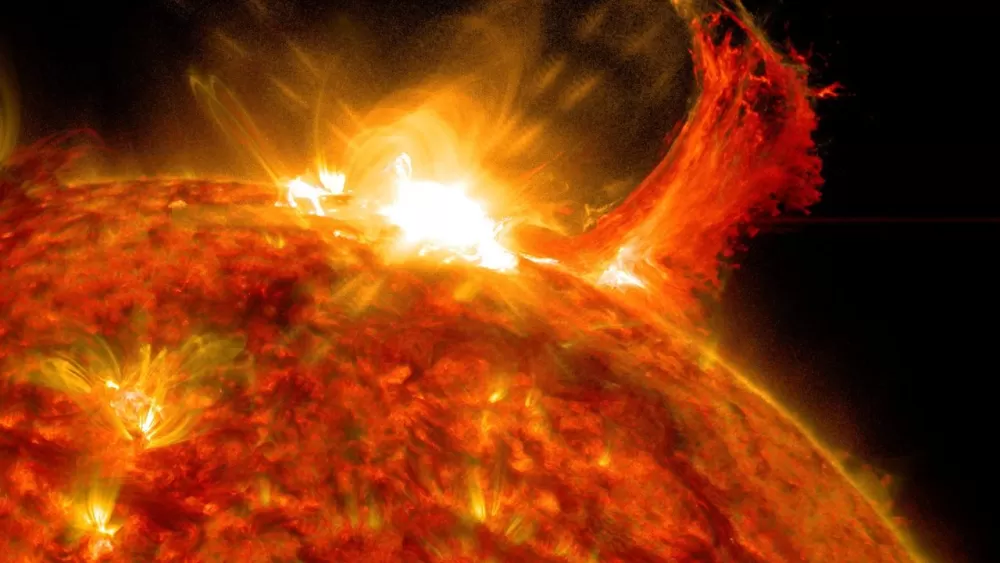The Sun's Fiery Secret: Cracking the Cosmic Code of Its Superheated Atmosphere
Share- Nishadil
- October 30, 2025
- 0 Comments
- 4 minutes read
- 15 Views

Solar Corona's Fiery Enigma: The Long-Awaited Solution Emerges
For decades, the Sun's impossibly hot outer atmosphere has puzzled scientists. Now, a groundbreaking theory involving magnetic gymnastics and energetic waves might just offer the definitive answer, fundamentally reshaping our understanding of our star.
For generations, it's been one of the universe's most perplexing, dare I say, stubborn mysteries: why is the Sun's outer atmosphere, its corona, millions of degrees hotter than its actual surface? It's like finding a campfire where the air ten feet above the flames is scorching hot, while the fire itself is merely warm. Absolutely baffling, isn't it? Well, after decades of head-scratching, scientists might, just might, have finally untangled this cosmic conundrum.
You see, the Sun's surface, its photosphere, chugs along at a relatively modest 5,500 degrees Celsius (about 9,900 F). But venture just a little bit higher, into that shimmering halo we call the corona, and suddenly the temperatures skyrocket to a staggering 1 to 2 million degrees Celsius (1.8 to 3.6 million F). It defies logic, really, violating pretty much every rule of thermodynamics we thought we understood. Conventional wisdom dictates that heat should dissipate as you move further from the source, not intensify. So, how on Earth does our star manage this seemingly impossible feat?
Scientists have tossed around a few ideas over the years. Magnetic reconnection, for instance, where tangled magnetic field lines suddenly snap and realign, releasing immense energy. Or perhaps Alfven waves, ripples of magnetic disturbance that surge through the plasma. Both theories had their merits, certainly, explaining some of the heating, but neither could quite account for the widespread, persistent inferno that is the solar corona. They felt… incomplete, like a puzzle missing a crucial piece.
But a new study, spearheaded by a team from the University of Oslo and the Rosseland Centre for Solar Physics, proposes something rather brilliant: what if it’s not an either/or situation? What if, in truth, these two phenomena are actually collaborating? Their theory suggests that small, frequent bursts of magnetic reconnection act as cosmic accelerators, energizing those Alfven waves. Imagine tiny, magnetic whip-cracks sending ripples of pure energy hurtling through the Sun's atmosphere.
And here’s where it gets truly fascinating. These accelerated Alfven waves, instead of dissipating their energy near the Sun's surface, travel upwards, carrying their tremendous thermal cargo. As they ascend into the thinner, less dense corona, they encounter less resistance, much like a surfer catching a powerful wave. Eventually, these waves break, much like ocean waves on a shore, but in this case, their energy isn't spent on sand – it's converted directly into heat, supercharging the plasma and raising the temperature to those mind-boggling millions of degrees.
This isn’t just elegant theorizing, either. The researchers, I mean, they didn't pull this out of thin air. Their models and simulations align rather beautifully with real-world observations. Data from intrepid solar explorers like the Parker Solar Probe and the Solar Orbiter have provided tantalizing clues, spotting these energetic waves and the signatures of small-scale magnetic reconnection events throughout the corona. You could say the pieces of the puzzle are finally clicking into place, revealing a more complete picture.
So, what does this all mean? Well, if this new hypothesis holds up – and all signs suggest it just might – it represents a monumental leap in our understanding of the Sun. It could help us predict space weather more accurately, understanding those powerful solar flares and coronal mass ejections that can play havoc with our technology here on Earth. And, honestly, it sheds light on stellar physics far beyond our own star, giving us insights into how other stars, near and far, maintain their own incredible atmospheric temperatures. It’s a moment, I think, of true scientific awe, unraveling a secret that has literally been staring us in the face for millennia.
Disclaimer: This article was generated in part using artificial intelligence and may contain errors or omissions. The content is provided for informational purposes only and does not constitute professional advice. We makes no representations or warranties regarding its accuracy, completeness, or reliability. Readers are advised to verify the information independently before relying on







